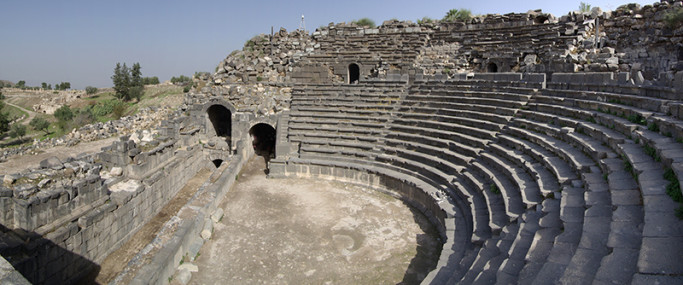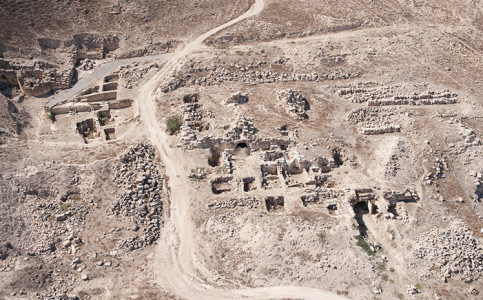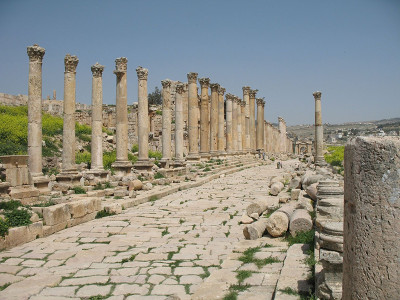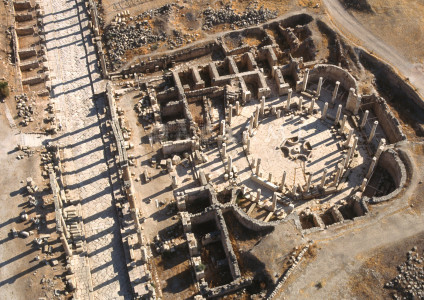A number of people have asked me to share more about the wildfire that resulted in the death of the young cat whose memory lies behind Mari in The Gospel According to Yeshua’s Cat. This is the story of that wildfire.
![]()
Killing drought followed years of plentiful rainfall. Temperatures spiked into the 100’s and refused to drop. Creeks ran low. The odor of pine resin hung heavy in the air. A dry lightning strike—and a rancher who didn’t take it seriously enough—provided the critical mass, and two weeks later wildfire had consumed 40,000 acres of forest, pastures, and homes.
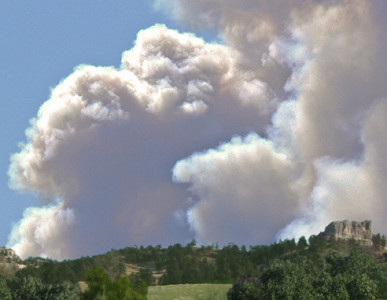 We dismissed the first smoke rising behind the buttes as nothing more than a wayward cloud, never imagining that the storm building there would explode into a holocaust. The days that followed dragged by in anxious succession. Winds dropped, and then blew up again out of nowhere. The fire turned back on itself, only to gather strength and roar off in another direction. Waves of rumor obliterated facts.
We dismissed the first smoke rising behind the buttes as nothing more than a wayward cloud, never imagining that the storm building there would explode into a holocaust. The days that followed dragged by in anxious succession. Winds dropped, and then blew up again out of nowhere. The fire turned back on itself, only to gather strength and roar off in another direction. Waves of rumor obliterated facts.
One night we drove out to watch the fire’s progress from a nearby ridge. News pictures of fire-lit nightscapes are commonplace now, but for us 8 years ago the scene was nothing less than apocalyptic. Small refugee animals fleeing the fire choked the dirt roads as we steered a path among them. I remember the porcupines best, humping their way in unseemly haste through the sullen light. Lines of flame spreading across the black ridges looked like flowing lava. The images presented themselves to our visual processors as nonsense, unreadable data. Nothing in our lives had prepared us for this.

First we evacuated the horses, just in case. We found carriers for the dogs and cats and set them by the doors. When the call came, we were as ready as we could have been, but we had room for little but the animals, basic clothing, toiletries, and our computers. Then for a week of endless days we waited in a small motel on a busy highway 30 miles away.
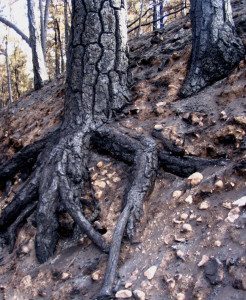 Why our home didn’t burn will always remain a mystery. The firefighters abandoned their efforts in the face of high winds and encircling fire. We were advised to expect a total loss. But in the end, the flames stopped as if by divine fiat all along the wire pasture fences that enclosed our buildings. Sap melted out of the old redwood paneling in my house from the heat, but only the land burned—the land and something deep in the flesh of my small black cat.
Why our home didn’t burn will always remain a mystery. The firefighters abandoned their efforts in the face of high winds and encircling fire. We were advised to expect a total loss. But in the end, the flames stopped as if by divine fiat all along the wire pasture fences that enclosed our buildings. Sap melted out of the old redwood paneling in my house from the heat, but only the land burned—the land and something deep in the flesh of my small black cat.
Morgan, cat of quiet pine groves that she was, probably hadn’t ever been in any building other than my house, and certainly never a motel on a busy highway. For a week she hardly came out from under the bed. No matter what I tried, she refused to eat, and she probably didn’t drink. By the time we returned to the still-smoldering ruins of our forest, she had a urinary infection. No medication touched it, and she grew steadily weaker, until at last the vet tested her for feline leukemia. The results were positive: she’d probably been born with it. All options vanished. The vet’s theory, and a sound one from what I’ve heard, was that the physical stress of her changed environment roused the sleeping disease into burning life. She might have stood a better chance if I’d left her behind to survive the wildfire on her own.
Within two months of the fire, Morgan was dead. I buried her in the charred grove where we had planned to build a small chapel. Beneath boughs once sweet with resin, in smoke-filled light and brittle shade, I laid her under the endless sky. And I grieved.
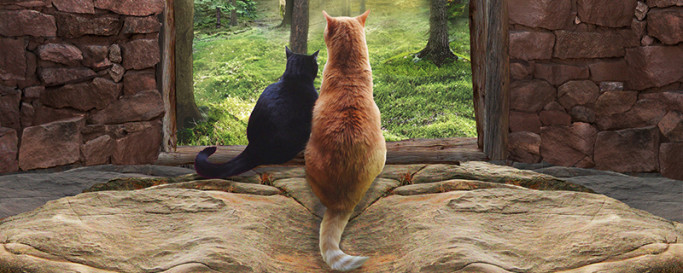
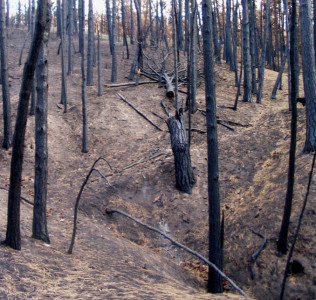 But the grief had really begun when the vet first placed the figurative black cloth on his head and passed sentence of death. A dead forest surrounded me. My gentle cat was fading away in my arms. Eventually I gathered courage and resumed my walks beneath beloved trees, now wasted skeletons streaked with amber tears.
But the grief had really begun when the vet first placed the figurative black cloth on his head and passed sentence of death. A dead forest surrounded me. My gentle cat was fading away in my arms. Eventually I gathered courage and resumed my walks beneath beloved trees, now wasted skeletons streaked with amber tears.
.
I remember shutting my heart against the echoes of pain that surely must lie in ambush along those charcoaled aisles. But as weeks passed, only woodland stillness reigned. Blowing ash darkened the sun—smoke without fire, forest lives airborne—but already the forest’s heart was turning to the east. Life was emerging from death.
Blasted meadows were greening. Tenacious pines, seared but stubborn, drank deep to gather strength for life. Fire-crimsoned cones dropped seed. Seedlings broke the fragile soil. *
I found comfort in the cycle of life, and even in death..
Somehow over the next five years, Morgan’s death, questions about the Creator’s on-going involvement in non-human nature, the timing of Jesus’ coming in human history, and the redemption of the suffering Earth—all came together into the creation of Yeshua’s Cat. The spiritual doubts that had plagued my heart for years ripened and bore sweet fruit.
.
I’ll continue the story of this journey in a few weeks. Come back soon!
.
* To read about the devastating effects of salvage logging on the recovery of burned forests, click here.
.
.


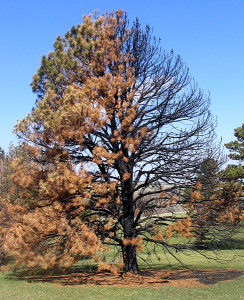





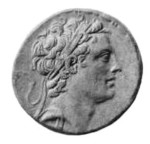
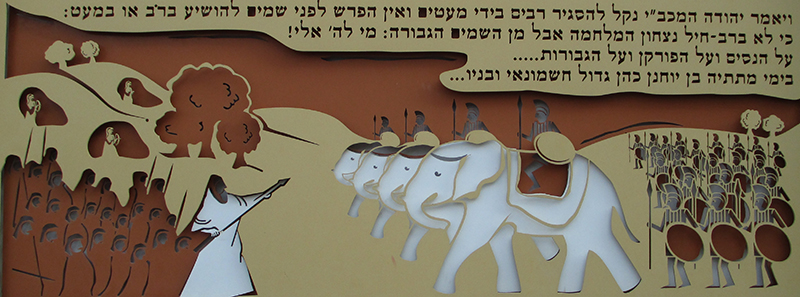
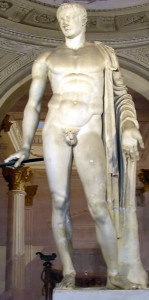
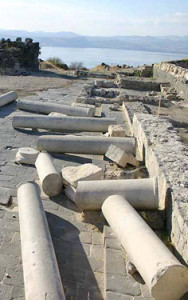
 HIPPOS sat on a high ridge overlooking the eastern side of Sea of Galilee, surrounded on all sides by steep inclines and high fortifications. One thin shoulder of rock approached the main gate on the east, where a fortified road connected the city to the eastern hills as well as indirectly to the sea. Of all the Decapolis cities, Hippos is said to have harbored the greatest antagonism toward Israel for her part in the Hasmonaean wars.
HIPPOS sat on a high ridge overlooking the eastern side of Sea of Galilee, surrounded on all sides by steep inclines and high fortifications. One thin shoulder of rock approached the main gate on the east, where a fortified road connected the city to the eastern hills as well as indirectly to the sea. Of all the Decapolis cities, Hippos is said to have harbored the greatest antagonism toward Israel for her part in the Hasmonaean wars.

